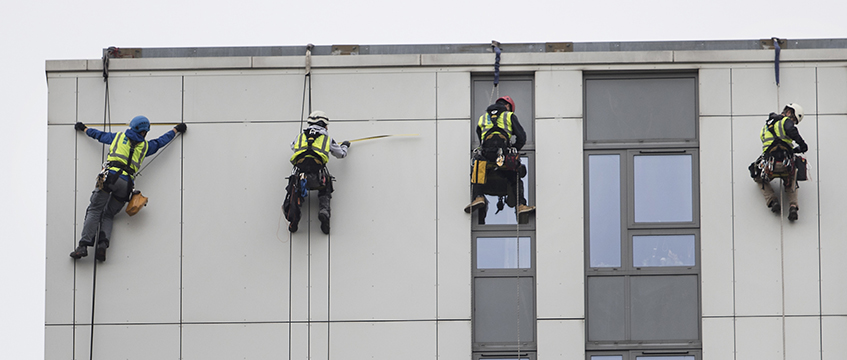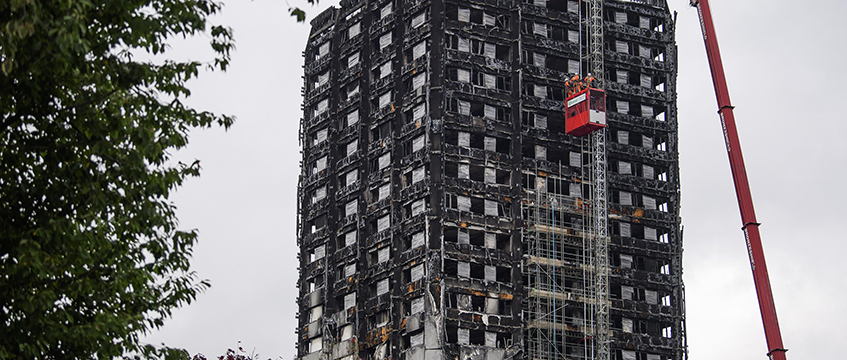New government proposals to toughen up building safety regulations following the Grenfell fire tragedy last year are leading the commercial property sector to rethink its approach to fire safety.
Dame Judith Hackitt’s Independent Review of Building Regulations and Fire Safety report, commissioned by the government and published in May, said the current system is ignorant and indifferent, with a lack of clarity and regulatory oversight.
Among the report’s recommendations are a new regulatory body, along with new regulations, a clear definition of duty holders and responsibility, digital records for buildings, and the tackling of poor procurement practices.
Although the report focuses heavily on high-rise residential buildings, EG has spoken to a number of industry players who expect a wider range of measures to follow.
Iain Cox, chair of the Business Sprinkler Alliance (BSA), said: “I think high-rise residential buildings were the focus [of the Hackitt report]. But my worry is that the next fire tragedy won’t be at a tower like Grenfell, it will be a large warehouse or one of those multi-purpose office blocks.”
Listen to the podcast from the discussion below
Tom Roche, senior consultant at insurance company FM Global, added that several of the themes in the Hackitt report could be applied to the commercial sector.
“The issues are not just confined to high-rise residential buildings, we’re seeing the same thing in other residential buildings, and we’re seeing them in commercial developments. If we look at some of the recommendations it’s not hard to see how they can be expanded to move into other areas.”
In particular, he highlighted Hackitt’s call for stronger penalties to hold duty holders to account through a new structure called the Joint Competent Authority (JCA).
“We could see similar actions [in commercial property] to impose requirements on people to consult more about certain steps in the process,” he said.
Key lessons
The property industry has already taken steps to improve building safety, even though the government has yet to formally introduce new legislation.
From landlords opting for safer materials, to the introduction of new contracting models, the sector is pushing for change.
Cushman & Wakefield head of EMEA health, safety, security and environment, Matthew Garwood, said: “This industry is going to require a very big change over a long period of time so it’s going to be a long and drawn out process. And in the meantime I think duty holders and players will make their own decisions as to what their risk appetite is, and start to make their own changes.”
Mark Cleverly, head of commercial developers at design and management consultancy Arcadis, said: “In our day to day work we’re already seeing drive and initiatives from clients to take much more conservative de-risking positions towards high rise buildings particularly in the residential sector. So a number of them are already ruling out certain types of material and forms of construction.”
He added that landlords are already moving away from aluminium cladding and combustible insulation.
Paul Bussey, senior technical consultant at Allford Hall Monaghan Morris Architects, said: “I think having layers of safety important. Arguably, if there had been sprinklers at Grenfell, it might have made a difference.”
Roche added: “I still do not understand why we’ve got to a position where sprinklers are talked about as a last resort. They are probably one of the first things people should consider as part of their layers of safety. It is time to consider using sprinklers in a wider range of buildings.”
The speakers also raised concerns about the current standards of testing building materials.
Bussey said: “ We’ve got to have a lot more testing rather than desktop analysis which, at the end of day, just involves sucking a finger and putting it in the air, to be frank.”
Cleverly commented: “The whole process needs to be viewed holistically, particularly in light of what happened at Grenfell with the fire spreading out of the kitchen. So we need better supervision around the installation and the ongoing inspection of this work as it’s put in to make sure fire barriers are properly installed.”

He also said that contracting models could be re-examined. “A lot depends on the success of the main contractor and sub-contractor relationship on a building project. In certain instances that appears to be failing, we could be looking at a more alliance based system of construction procurement.”
Garwood added: “I think there is a responsibility on all parts of the industry to increase the level of competency within their contractors and their consultants. In Grenfell, when windows were refitted in the tower, there were gaps that caused problems and expanding foam was used where it should not have been used.”
Enforcement with teeth
While the industry is already rethinking its approach to fire safety, the speakers said that good regulation was still essential to drive real change.
Cox commented: “I think enforcement with teeth is important. The key is to make sure a building is fit for purpose before its occupied. I actually think that if Hackitt’s JCA can go in and issue a stop notice the construction industry will take a lot of notice of that.”
Roche said: “I think the guidance needs a lot of work. And I think that will come forward over time and perhaps we’ll see some changes where actual building resilience might see more of an appearance when it comes to fire, as opposed to just the life safety aspect. We need to see a change of mindset.”
In light of further changes being introduced, some industry players are already taking defensive measures.
“The contracting side of the industry are also asking for Grenfell tower clauses to be included in building contracts to protect themselves from any changes coming out of the Hackitt review,” said Cleverly.
However, he warned that the JCA is unlikely to be a success, if it is introduced, without substantial government funding.
“It requires a large investment in resource and training because we need greater levels of control in signing off a safety case for a building.”
To send feedback, e-mail anna.ward@egi.co.uk or tweet @annaroxelana or @estatesgazette
In partnership with












